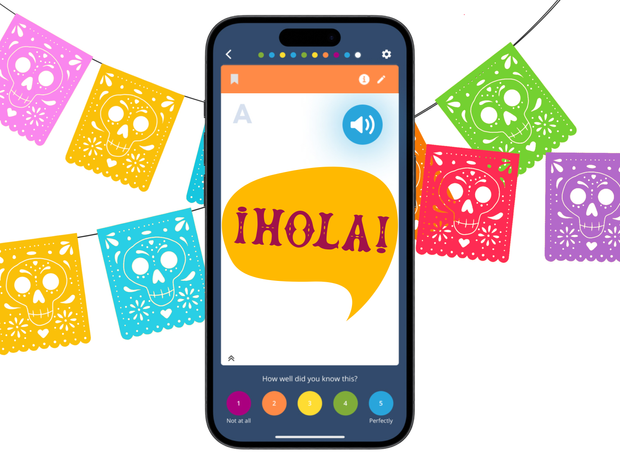You're here because you want to expand your horizons by learning a new language—¡Español!—using all the cheat codes you can get your hands on. I'm talking, of course, about the best apps to learn Spanish.
Great news! You're in the perfect place to discover the most helpful learning tools. Here at Brainscape, we spent over 10 years developing our flashcard software specifically for Learning Spanish, while leveraging the key cognitive science principles of language learning. So, yeah, we kinda know a lot about what Spanish language apps are out there and which ones are the best for expediting your learning journey.
We wholeheartedly support the use of apps for language learning, particularly since we all spend so much time on our phones (don't deny it). But instead of swiping left on Hinge or scrolling aimlessly through TikTok, why not squeak in some productive learning on your daily commute with these, the best apps to learn Spanish in 2025?
You'll be on your way to hablar en español in no time!
The Best Spanish Language App: Brainscape
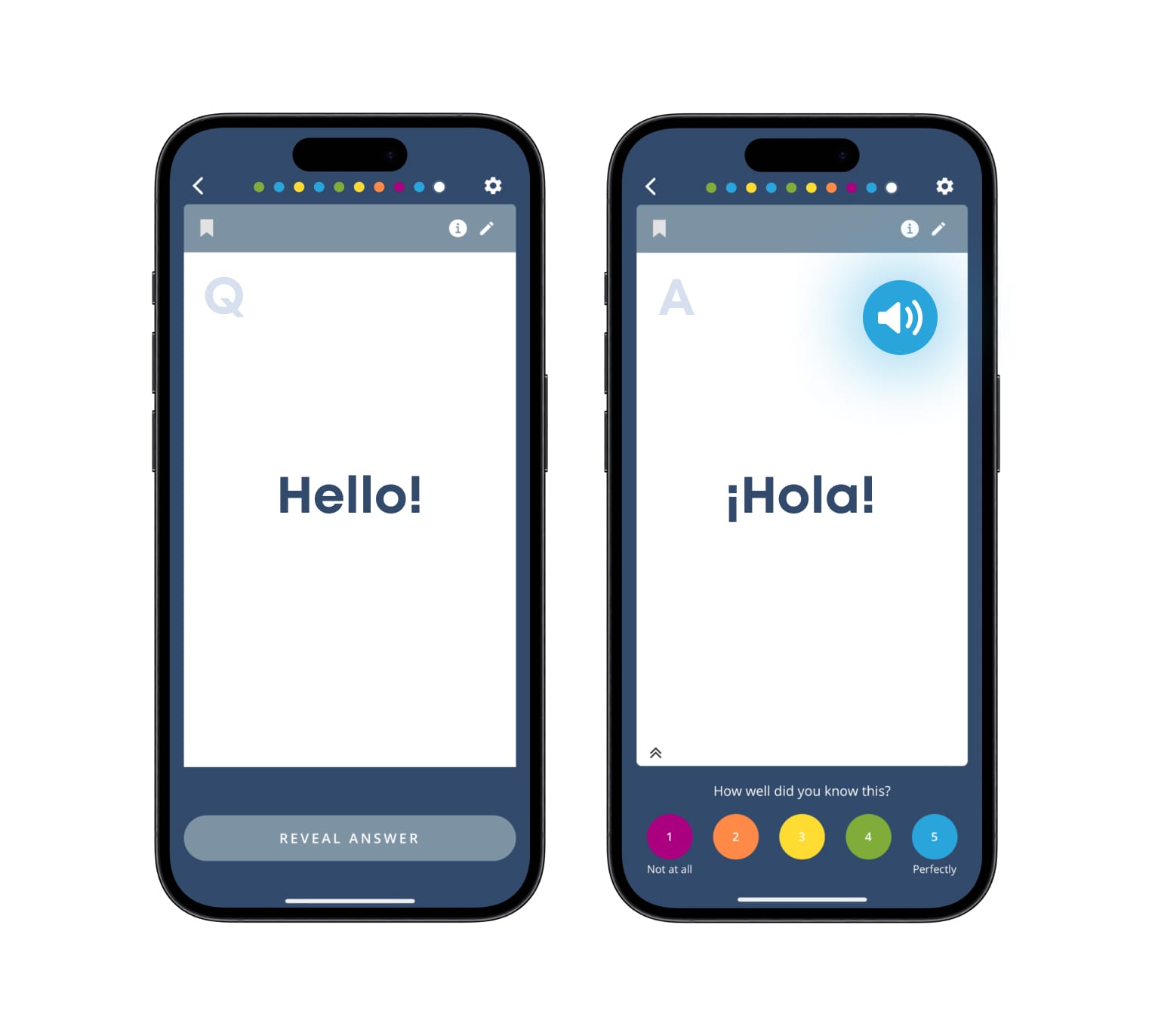
Brainscape's Spanish language app is the best way to learn the core components of the language: grammar, vocabulary, phonetics, and pragmatics (rules for appropriate and effective communication).
You won't have to think about what to study. Our algorithm detects what you need to look at next and presents it to you at the optimal time.
Our custom adaptive learning technology helps you learn thousands of new Spanish grammatical concepts, vocabulary words, and even pronunciations with spaced repetition. This is a learning tactic that's proven to help you learn at least TWICE as fast as traditional studying because it drills you on the concepts you struggle with while saving you time on those you've already mastered.
Brainscape is the only Spanish learning app on the market whose curriculum was specifically built for a spaced repetition algorithm. Together with our app and the cognitive scientific principles it's founded upon, you'll learn Spanish twice as fast as with traditional study methods.
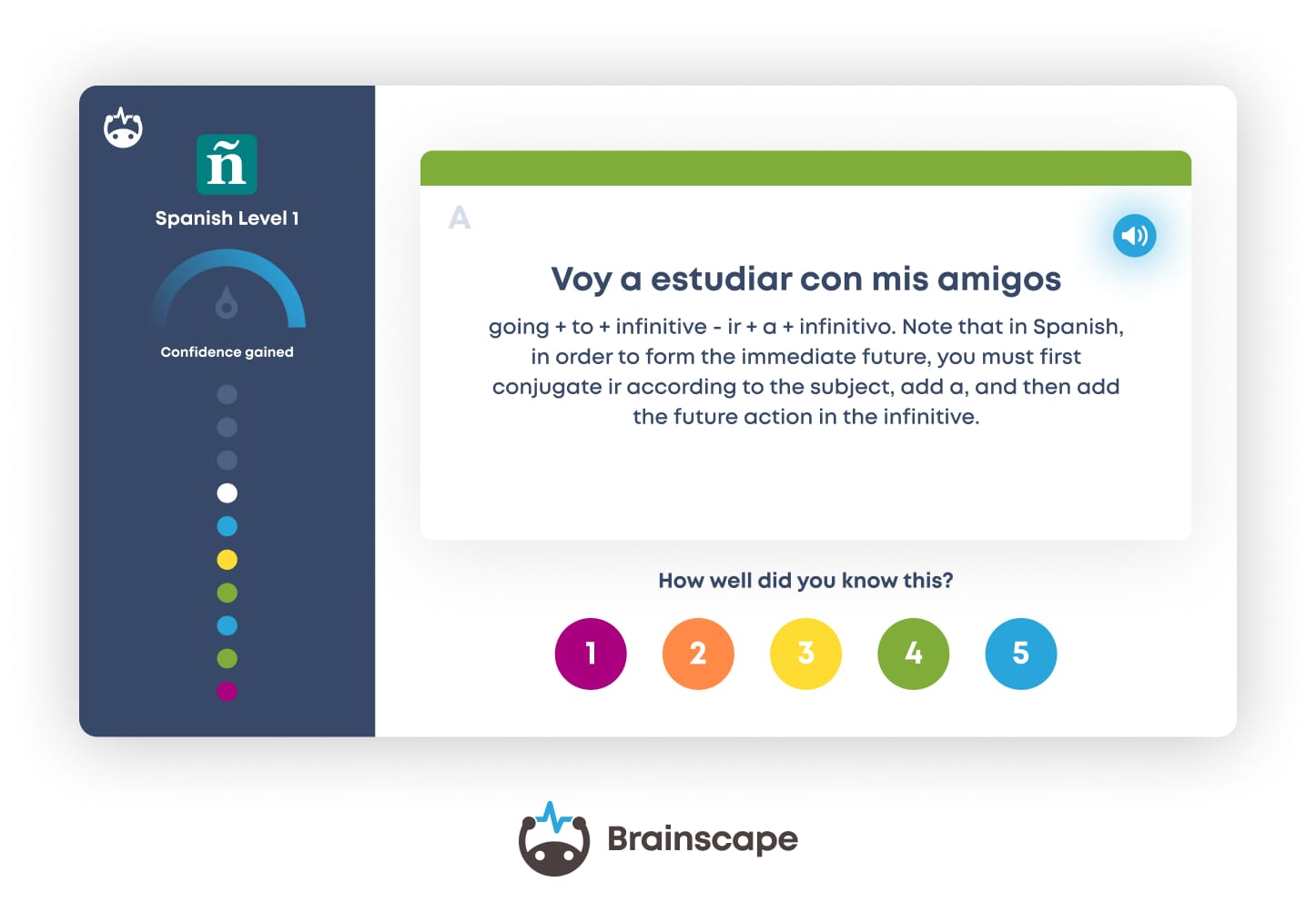
Additionally, the curriculum is carefully scaffolded, from the most basic, fundamental concepts you should know first, through to the more esoteric concepts and definitions you'll need later.
Pros:
- You can start learning Spanish using Brainscape at any level. Even if you're more advanced, you can start from the beginning and brush up your memory on vocab and grammar before tackling new concepts.
- Our Spanish learning app judges your ability to learn by asking you to rate your self-confidence for each concept. This helps the app properly gauge when and how often it should repeat new information.
- You also don't learn everything at once. Brainscape uses a cumulative curriculum that introduces only one new concept at a time in a logical order (from most useful to most specific).
- What’s more, Brainscape’s Learn Spanish app features audio pronunciations, which allows you to hear the Spanish as it should sound!
- If you hear a new word you'd like to practice, you can always make your own flashcards for free!
- Flashcards are versatile! There are so many fun and creative ways to use them for language learning.

Spanish Learning Apps # 2: Duolingo
Duolingo is a game-like app that rewards you with badges for practicing your Spanish. If you're looking to learn Spanish in a more fun and game-like setting, then Duolingo is the right choice!
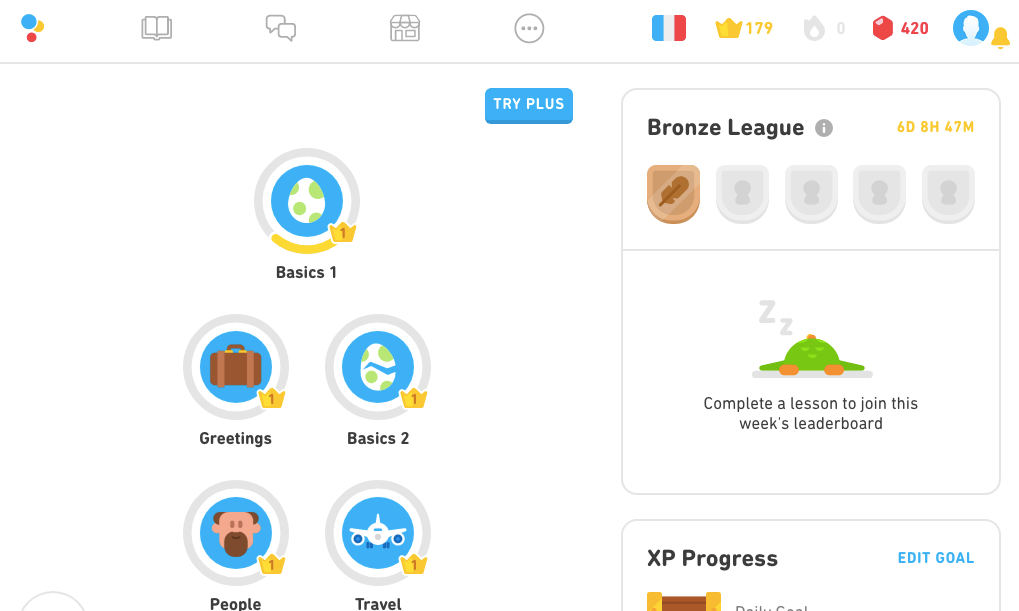
Pros: Duolingo is popular for multiple reasons: It’s free, it’s a game, and it does a reasonably good job of teaching vocabulary, simple conjugation, and basic listening skills. It accomplishes this in a game-like setting, complete with hearts to “lose” for each level you finish (Zelda, anyone?). You can even see whether or not you’re learning faster than your friends.
Cons: The major con with Duolingo's Spanish learning app is that it doesn't systematically repeat concepts. This means that you see something once and feel good about engaging with it. But you'll never see it again, and you'll just forget it. Duolingo gives you a funny owl and a sense of accomplishment, but it does not provide spaced repetition to lock vocabulary into your brain.
Also, while Duolingo is great at lower levels, it won't get you past a lower intermediate level. If you want to be able to have a conversation in Spanish, you'll soon grow out of Duolingo.
Best Apps to Learn Spanish # 3: Rosetta Stone
Rosetta Stone's app is a classic for learning Spanish. It's been around for ages and for good reason. It offers users a balanced approach to language learning with speaking, writing, and rewarding exercises at various levels.
Rosetta Stone is big and comprehensive, although perhaps not the most effective app to learn Spanish.
Pros: Rosetta Stone's Spanish learning app offers a completely immersive experience. There aren't any English equivalents offered to you in this app—you’re learning Spanish just as a child would. To help you understand concepts, you can schedule lessons with a live tutor and even converse with native Spanish speakers.
Cons: As you may have guessed, this doesn’t come for free. While you can download the trial version free of charge, the cost for the full features is $199.99. Rosetta Stone also lacks explanations on grammar and other language rules, as the whole idea is that you will just “figure it out” intuitively.
The problem with this approach is that it's slower. You'll learn faster by drawing connections between English and Spanish. It's scientifically proven that your mother tongue has a place in language learning.
Spanish Learning Apps # 4: Busuu
Busuu is a community-oriented app that's best for honing your speaking skills. It has similar activities to Duolingo but rather than learning on your own, it offers a unique opportunity to connect with native Spanish speakers who are looking to learn English.
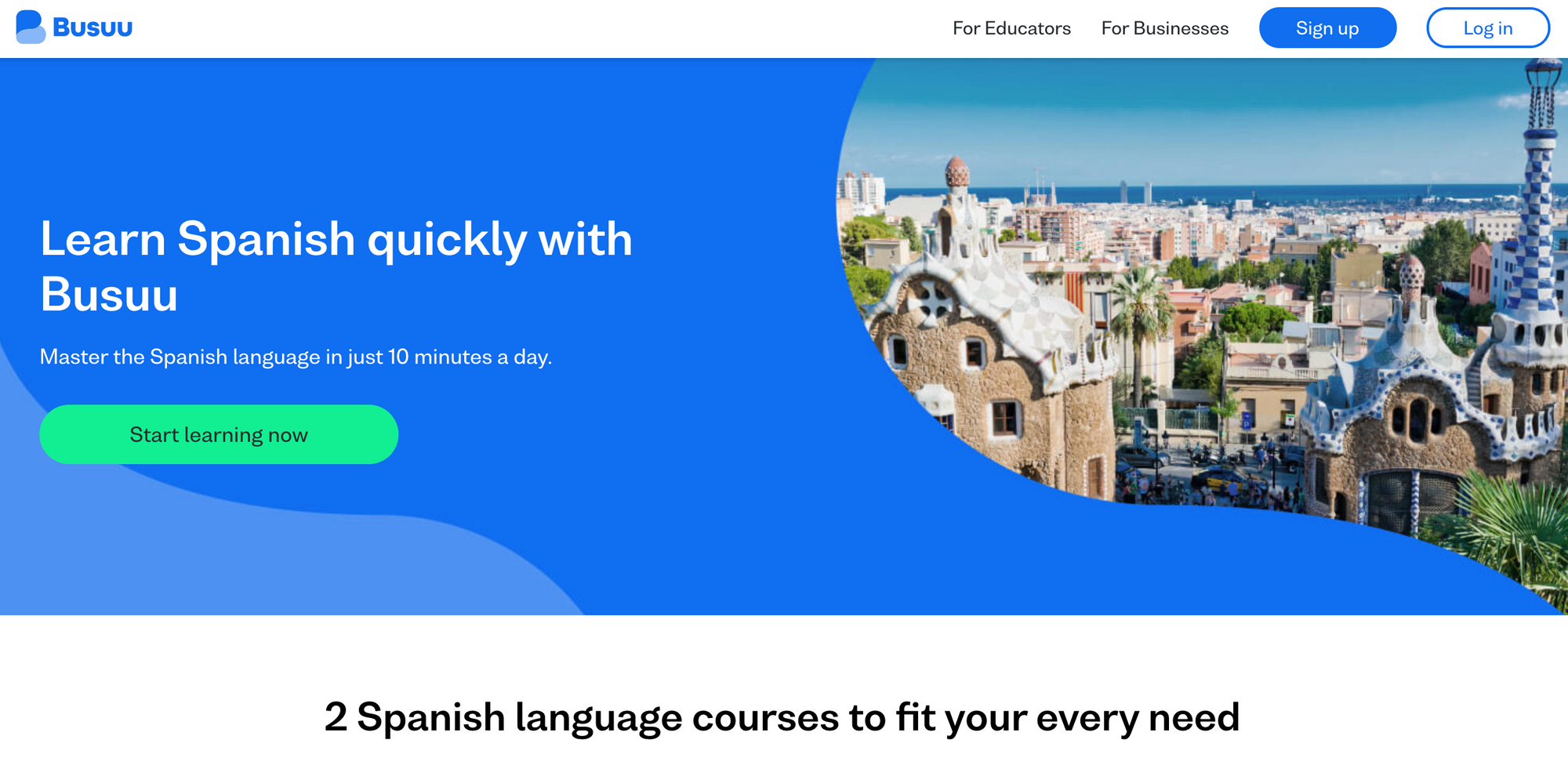
Pros: Busuu’s strength lies in its community. This Spanish learning app focuses heavily on conversational practice. Its users learn vocabulary, practice writing and then editing one another’s work, speak with native Spanish speakers, and even record mock conversations.
Cons: This Spanish learning app has changed its model in recent years, though. You still have a 'fast track' to learning Spanish, with messaging exercises with a community of native speakers, but that's an added feature. Instead, they now use a free speech recognition tool. Again, native speakers aren't for free. At this time, Busuu charges $19.98 per month of use.
Best Apps to Learn Spanish # 5: Spanish Translator +
Spanish Translator + by Vidalingua is the go-to dictionary that every serious learner needs on their language learning journey. Having a dictionary handy means you can look up the meaning of words on the fly.
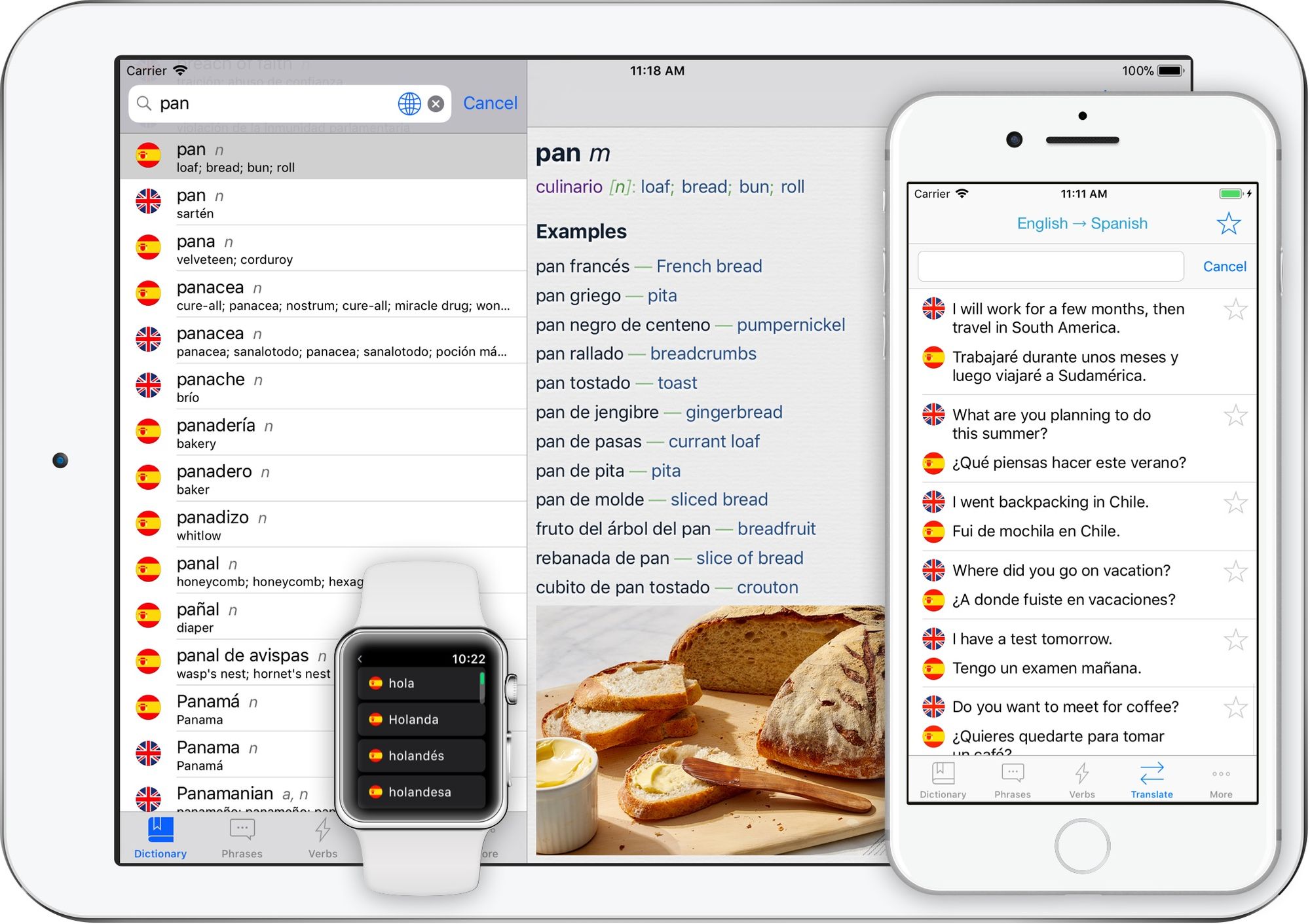
Pros: This Spanish learning app isn't just your everyday dictionary. It includes an advanced sentence translator, comprehensive dictionary, verb conjugator, phrasebook, flashcards, vocabulary quizzes, and more. That's quite a collection of learning tools that you can use anywhere and at any time! It also allows you to personalize your learning process by adding your own audio, notes, and pictures.
Cons: It really only meets the needs of a basic language learner. There are many phrases, conjugations, and grammatical concepts that are not included in the app. It's a handy reference guide, but it doesn't help you learn. if you actually want to learn Spanish, you'll need to pair it with another Spanish learning app like Brainscape.
Spanish Learning Apps # 6: Tandem
Arguably, the best way to learn a language is by speaking it consistently. Unfortunately, we don't all live among the cobbled streets of Madrid, able to ask our Spanish friend for a quick lunch of Tortilla de Patatas. That's where the Tandem app for learning Spanish comes into play.
Tandem is an online learning community with tons of available conversation partners in Spanish. All you need to do is choose your language and search for an appropriate partner. You can begin chatting about real topics rather than simply speaking directly to your app.
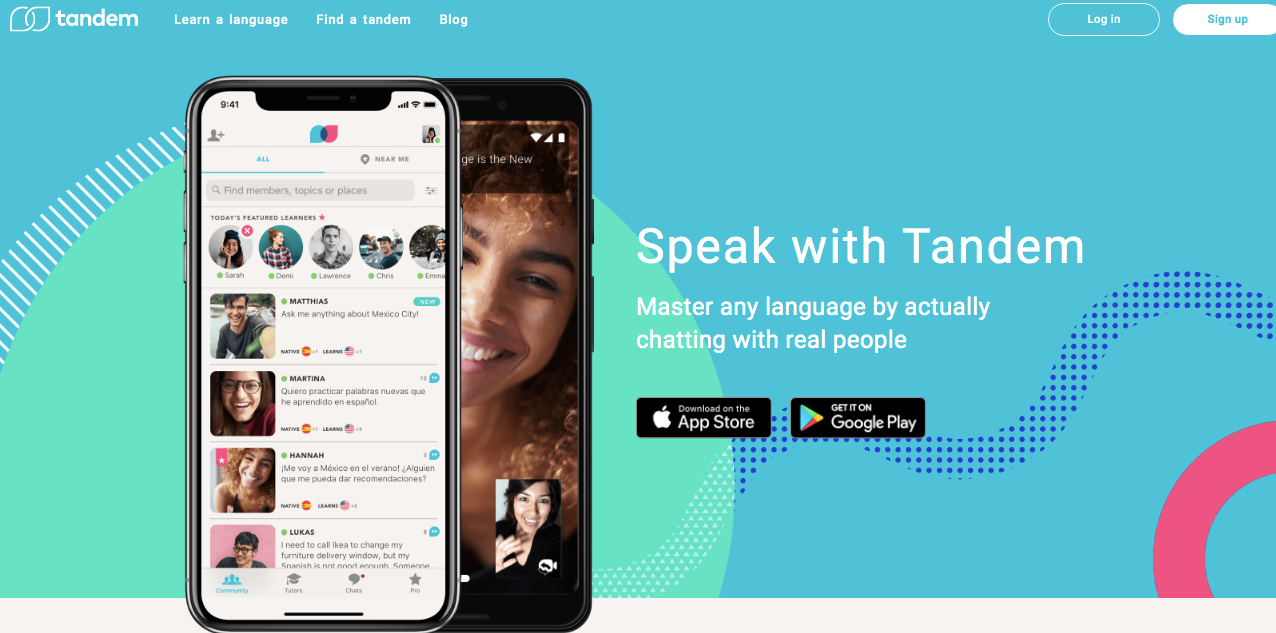
Pros: By offering real conversation partners, Tandem is the ideal Spanish learning app to practice your listening skills, improve pronunciation, and speak in a foreign language to a local. Although you still need to learn vocab and grammatical structures (with Brainscape, for example) this is the perfect way to practice your Spanish, and talking will soon become second nature.
Cons: The only real downside to Tandem is that you might want to spend your money on visiting your new friends from Barcelona. But would that really be so bad?
A Final Note on the Best Apps to Learn Spanish in 2025
As it turns out, the best apps to learn Spanish are a dime a dozen. But no app can replace an entire language learning journey. After all, cognitive science research shows that the best way to learn Spanish is through real-world study (speaking, listening, and reading) and by using deliberate learning tools for grammar and vocabulary.
Motivation is the killer of many a language learning journey. You're more likely to study if you have proof that you're making real progress. This is what sets Brainscape a cut above the rest: by helping you to learn twice as fast and taking the guesswork out of what to look at next, it frees up your mental energy for actual learning and makes you more likely to study.
You should construct a learning experience that works for you. And how do you do that? Brainscape has created a comprehensive guide on how to learn Spanish more efficiently.
Hold on: why are we giving all this information away for free? Well, we're a company of people who are obsessed with learning. Brainscape started when our CEO Andrew built a spreadsheet to learn Spanish vocab faster. We do it for the love of the game. We want to help you learn Spanish with the most efficient study tool in the world.
¡Vamos! Let's learn Spanish.
